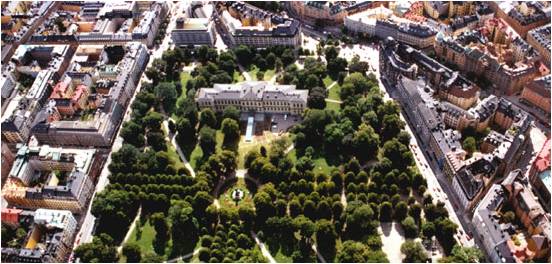Green areas in compact, energy efficient cities
Attain attractive and sustainable urban environments.
Project leader: Berit Balfors
Participants: Juan Azcárate
Funding: Swedish Transport Agency
Project description
Effectively energy use and reducing greenhouse gas emissions are strategic issues for the transportation sector. Hence, in parallel to the development of energy efficiency transportation technologies, interest has grown in studying the integration of transport systems planning with regional and city planning as it is claimed that integrated planning can lead to denser cities and environmental friendlier transportation systems. A main stream postulation is that denser planned cities offering a diversity of functions and shorter travel distances stimulate walking and the use of collective transportation, leading to low car traffic cities that efficiently use energy. The complex links between city density and its implications for transportation systems, call for a better understanding of factors that affect the planning of transportation systems in compact cities.

One such factor that could have a significant impact on the planning of transportation systems in local and regional city contexts is that of green urban open spaces. Green wedges, parks, wetland areas, shore lines, gardens, cemeteries, golf courses and treed boulevards are considered to be examples of green open spaces in urban settings. Apart from being important spaces for the protection of biodiversity, green urban areas provide city inhabitants with ecosystem services such as microclimate regulation, air and water filtration, recreation, and improved health. Moreover, green urban areas can serve to shape city identities, strengthen regional integration, and act as a potential driver of urban development. Discussions on building compact, energy efficient cities are taking place which raise potential conflicts with policies that aim at conserving green urban areas for the preservation of biodiversity and natural values in city regions.
Aim
The project aims to address the overall goal of attaining attractive and sustainable urban environments by creating and spreading knowledge on strategies and measures to best manage the conflicts that exist between urban densification, lowering city traffic, and providing access to valuable green urban areas.
Publications
Balfors, B., Azcarate, J., Mörtberg, U., Karlson, M. and Odelius Gordon, S. 2016. Impacts of urban development on biodiversity and ecosystem services . Chapter 8 in: Geneletti, D. (ed.). Handbook on Biodiversity and Ecosystem Services in Impact Assessment. Edward Elgar Publishing, pp 167-194.
Azcarate, J. 2015. Beyond impacts: Contextualizing strategic environmental assessment to foster the inclusion of multiple values in strategic planning . TRITA-LWR PHD 2015:02, doctoral thesis in Planning and Decision Analysis, KTH Architecture and the Built Environment, Stockholm.
